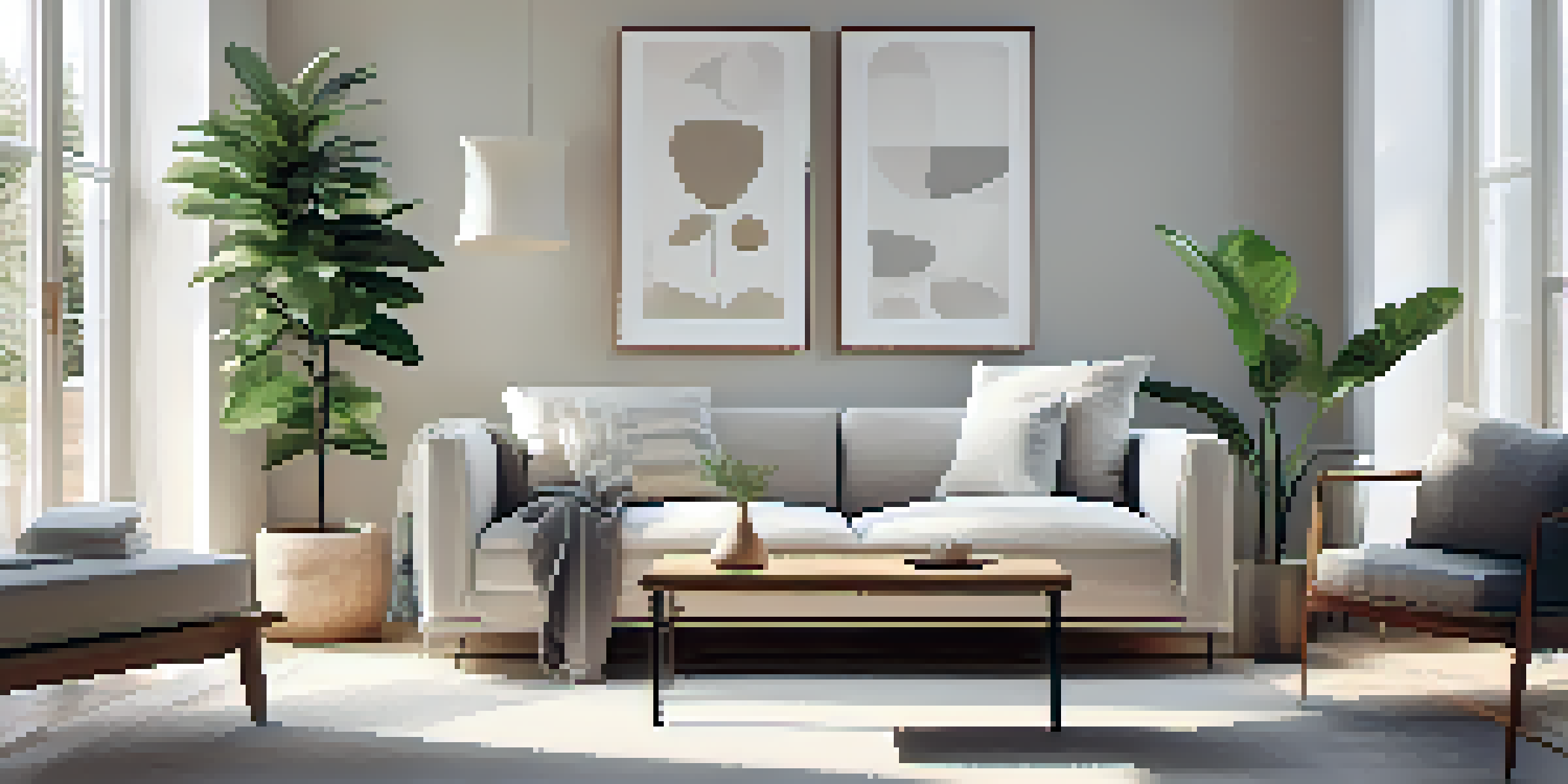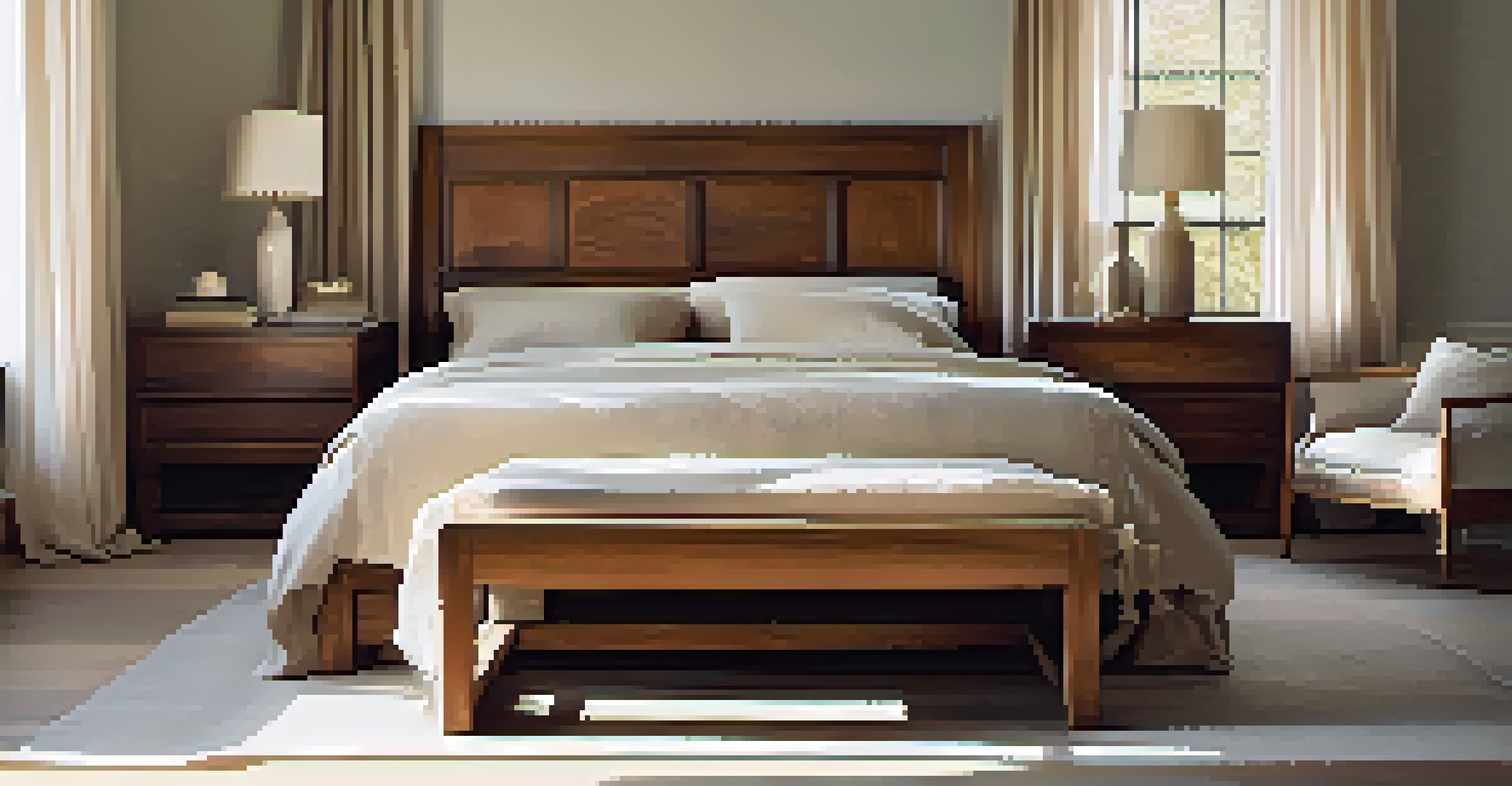Integrating Carving into Modern Minimalist Decor

Understanding Minimalist Decor and its Essence
Minimalist decor is all about simplicity, functionality, and clean lines. It creates calm and uncluttered spaces that promote tranquility. The focus is on essential elements, stripping away the superfluous to highlight what truly matters in a room.
Simplicity is the ultimate sophistication.
In this design philosophy, every piece of furniture and decor should serve a purpose while contributing to the overall aesthetic. Texture, color, and form are crucial, making it essential to choose items that resonate with the minimalist ethos. This is where carving can add a unique depth and character to an otherwise stark environment.
By understanding the core principles of minimalist decor, you can begin to see how carved elements can be integrated without overwhelming the space. The challenge lies in balancing the intricate details of carving with the simplicity that defines minimalism.
The Role of Carving in Design Aesthetics
Carving adds a layer of artistry and craftsmanship that can elevate your decor. It's a way of introducing intricate details that engage the eye without adding clutter. For example, a beautifully carved wooden chair can serve as a focal point while maintaining the minimalist vibe.

When used thoughtfully, carved elements can create visual interest and texture in a space. Think of a simple, carved wooden bowl on a plain table; it draws attention and invites touch, enhancing the overall experience of the room. This balance is essential in minimalist design.
Minimalism Emphasizes Simplicity
Minimalist decor focuses on essential elements, promoting tranquility by stripping away unnecessary details.
Incorporating carving doesn't mean abandoning minimalism; instead, it enriches it. The key is to choose pieces that complement the minimalist approach while providing that artistic touch that makes a space feel more personalized.
Choosing the Right Carved Elements
When selecting carved pieces, consider the materials and styles that align with your decor. Light woods like birch or maple can evoke a sense of calm, while darker woods like walnut can add warmth and richness. Matching the wood's tone with your existing decor ensures harmony.
Less is more.
Additionally, opt for pieces that embody clean lines and simple forms. Avoid overly ornate carvings that can clash with minimalist aesthetics. A subtle, geometric design can provide an artistic flair without overwhelming the senses.
Remember, it's all about finding that sweet spot between art and simplicity. A well-chosen carved accent can be the perfect bridge between the two worlds, enhancing the overall look and feel of your space.
Incorporating Carving into Furniture
Furniture is often the centerpiece of a room, making it an ideal place to incorporate carved elements. Look for items like coffee tables, chairs, or cabinets with subtle carvings that add character without being too busy. A simple carved detail on a cabinet door can be the perfect touch.
Consider multifunctional furniture pieces that offer both utility and beauty. For instance, a carved bench can serve as seating while also acting as a decorative element in an entryway. This approach aligns perfectly with minimalist principles.
Carving Enhances Minimalist Spaces
Incorporating carved elements adds artistic flair and texture while maintaining the minimalist aesthetic.
Ultimately, the goal is to integrate carving into furniture in a way that enhances functionality while also serving as a conversation starter. Thoughtfully designed pieces can seamlessly blend artistry with practicality.
Accessorizing with Carved Decor
Accessories are another great way to introduce carving into your minimalist space. Think about items like carved wooden trays, bowls, or even wall art that feature subtle designs. These pieces can add layers of texture and interest to your decor.
When accessorizing, it's important to keep the overall aesthetic in mind. Choose a few standout carved pieces rather than cluttering surfaces with too many items. This approach maintains the minimalist feel while showcasing your unique style.
Remember, accessories should enhance, not detract from, the simplicity of your decor. A single carved sculpture on a mantel can create a stunning focal point without overwhelming the space.
Balancing Carved Elements with Other Textures
In a minimalist space, balancing different textures is key to creating visual interest. Pairing carved elements with smooth, sleek surfaces can create a dynamic contrast that enhances the overall design. For instance, a carved wooden bowl placed on a glass table can create an engaging juxtaposition.
Mixing materials can also add depth to your decor. Consider pairing carved wood with metals or ceramics. A carved wooden lamp next to a sleek metal side table can beautifully illustrate this balance.
Cohesion is Key with Carved Pieces
A cohesive color palette and proportionate sizing of carved elements ensure harmony within minimalist decor.
The goal is to create a harmonious blend of textures that complements the minimalist aesthetic. This balance can make your space feel inviting and layered, rather than flat and monotonous.
Maintaining a Cohesive Look with Carved Pieces
To ensure that your carved elements fit seamlessly into your minimalist decor, stick to a cohesive color palette. Neutral tones often work best, as they allow the beauty of the carving to shine without clashing with other elements in the room.
Additionally, consider the scale of your carved pieces. They should be proportionate to the other items in the space to avoid overpowering the room. A large carved statement piece can work wonders in a spacious area, while smaller pieces might be better suited for tighter spaces.

Ultimately, creating a cohesive look involves thoughtful curation. Each carved element should feel like it belongs, contributing to the overall harmony of the space while still standing out as a unique feature.